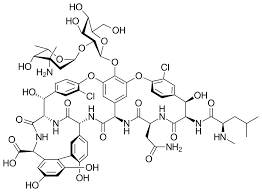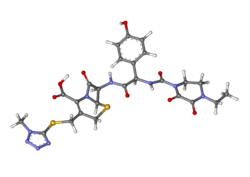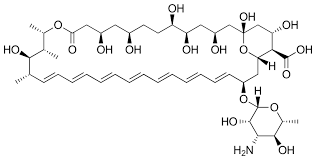In the field of clinical microbiology, the successful isolation and identification of fastidious, pathogenic organisms often require the use of specialized selective media. One of the most reliable and frequently employed media for isolating Campylobacter species is Campylobacter Blood Agar (CVA). This medium is uniquely formulated to encourage the growth of Campylobacter while simultaneously suppressing competing organisms that may exist in clinical or environmental samples.
Campylobacter species, particularly C. jejuni and C. coli, are significant causes of bacterial gastroenteritis worldwide. The ability to detect these organisms rapidly and accurately is crucial for appropriate patient management and public health interventions, making CVA a valuable tool in medical and research laboratories.
Summary of Campylobacter Blood Agar
- Campylobacter Blood Agar (CVA) is a selective medium used to isolate Campylobacter species from clinical and food samples.
- It supports the growth of fastidious, microaerophilic Campylobacter under low-oxygen conditions.
- CVA is essential in diagnostic labs and food safety testing but requires special incubation and confirmatory tests.
Table of Contents
Definition of Campylobacter Blood Agar (CVA)
Campylobacter Blood Agar (CVA) is a specialized, selective, and enriched culture medium formulated to facilitate the isolation of Campylobacter species from clinical and non-clinical specimens. Its selective properties are achieved by combining a nutrient-rich blood agar base with selective antibiotics that inhibit the growth of non-target organisms.
The medium not only enhances the growth of microaerophilic Campylobacter species but also minimizes the proliferation of other Gram-positive bacteria, Gram-negative bacilli, and fungal contaminants. This makes CVA indispensable for diagnostic laboratories working with stool, rectal swabs, and food products suspected of harboring Campylobacter.
Principle of Campylobacter Blood Agar (CVA)
The principle of CVA involves creating a microenvironment that selectively favors the growth of Campylobacter while suppressing unwanted bacterial and fungal flora. This is accomplished through a combination of enriched nutrients, selective antibiotics, and controlled atmospheric conditions tailored to Campylobacter’s specific growth requirements.
Enrichment of Campylobacter Growth
The nutrient-rich agar base contains peptones and yeast extract, providing a variety of amino acids, nitrogenous compounds, vitamins, and minerals essential for microbial metabolism. The inclusion of 5% defibrinated sheep or horse blood enhances the medium further by offering hemin and other cofactors necessary for the growth of fastidious organisms.
Blood also helps neutralize toxic metabolic by-products and aids in the detection of hemolytic reactions, although Campylobacter itself typically does not produce hemolysis. The presence of blood ensures a more supportive growth medium for these microaerophiles.
Selective Inhibition of Contaminating Flora
To minimize interference from non-target organisms, CVA includes selective agents such as vancomycin, cefoperazone, and amphotericin B. Vancomycin effectively inhibits most Gram-positive bacteria by disrupting cell wall synthesis, while cefoperazone acts on enteric Gram-negative bacilli.
Amphotericin B serves as an antifungal agent, preventing the overgrowth of yeasts and molds that may otherwise complicate culture interpretation. The selective agents in CVA work synergistically to reduce microbial competition, allowing Campylobacter colonies to develop more prominently and clearly.
Microaerophilic Incubation Conditions
Campylobacter species require a reduced oxygen atmosphere, typically around 5% oxygen, 10% carbon dioxide, and 85% nitrogen. CVA is designed for incubation under such microaerophilic conditions, which can be achieved using gas-generating kits, anaerobic jars with special gas packs, or dedicated microaerophilic incubators.
This low-oxygen environment is essential for optimal Campylobacter metabolism, as the bacteria possess oxygen-sensitive enzymes. Proper atmospheric control enhances colony visibility and viability, ensuring successful isolation.
Composition of Campylobacter Blood Agar (CVA)
The selective and nutritive nature of CVA is derived from a well-balanced composition of a nutrient-rich base medium, blood, and selective antibiotics. The precise combination of these ingredients ensures both bacterial growth and selective inhibition.
Base Medium
The base medium is typically Columbia Agar or Brucella Agar, containing peptones, yeast extract, dextrose, and mineral salts. These components supply essential nutrients, promote cell division, and stabilize the medium’s pH. The nutrient base also provides a buffering capacity, maintaining medium integrity during prolonged incubation periods.
Defibrinated Blood (5%)
Adding 5% defibrinated sheep or horse blood enhances the medium’s enrichment capacity by supplying hemin, NAD, and other vital growth factors. It also aids in detecting subtle hemolytic patterns and neutralizing oxygen radicals. Blood improves the growth of microaerophiles by reducing oxidative stress within the medium.
Vancomycin

Vancomycin inhibits the synthesis of bacterial peptidoglycan by binding to D-alanyl-D-alanine terminus of cell wall precursors in Gram-positive organisms. By doing so, it prevents these bacteria from establishing colonies on the medium, allowing Campylobacter species to grow without competition from Gram-positive flora.
Cefoperazone

Cefoperazone is a third-generation cephalosporin that effectively inhibits a broad range of Gram-negative enteric bacteria, including E. coli, Proteus, and Pseudomonas. Its presence in CVA ensures that these rapidly growing organisms do not overtake the medium, providing a clear field for Campylobacter colony identification.
Amphotericin B

Amphotericin B acts as a potent antifungal agent by binding to ergosterol in fungal cell membranes, creating pores that disrupt membrane integrity. This suppresses fungal growth in culture, a critical feature in stool samples that often contain yeast contaminants.
Preparation of Campylobacter Blood Agar (CVA)
The precise preparation of CVA is crucial to maintain its selective and enrichment properties. Each step must be performed carefully to preserve the medium’s functionality and sterility.
Preparation of the Base Medium
The agar base, such as Columbia Agar, is weighed and mixed with distilled water according to the manufacturer’s instructions. The mixture is heated while stirring until fully dissolved. Care should be taken to avoid overheating, which may degrade sensitive ingredients.
Sterilization
The fully dissolved base is sterilized by autoclaving at 121°C for 15 minutes under 15 psi pressure. Autoclaving ensures the elimination of all potential contaminants, preserving the medium’s sterility without affecting its chemical composition.
Addition of Blood
Once the sterilized medium has cooled to approximately 45–50°C, 5% sterile defibrinated blood is aseptically added. The temperature is carefully monitored to prevent hemolysis and protein denaturation. Gentle mixing ensures even distribution of blood components throughout the medium.
Incorporation of Selective Antibiotics
Selective antibiotics—vancomycin, cefoperazone, and amphotericin B—are prepared separately by filter sterilization and added aseptically to the blood agar mixture. Antibiotics are typically introduced just before pouring to maintain their full antimicrobial activity.
Dispensing into Petri Plates
The prepared medium is dispensed into sterile Petri dishes under aseptic conditions inside a laminar airflow cabinet. The plates are allowed to solidify at room temperature before being inverted and stored at 2–8°C. They should be used within the recommended shelf-life to ensure reliability.
Results of Campylobacter Blood Agar (CVA)
After inoculation and incubation under microaerophilic conditions, CVA allows for the selective isolation and observation of Campylobacter colonies against a clean background.
Appearance of Campylobacter Colonies
Following 48–72 hours of incubation at 42°C, Campylobacter colonies appear as small, round, and translucent to grayish colonies with a moist surface. Under oblique lighting, they often exhibit a metallic sheen and may have slightly irregular edges. Some strains can show spreading growth on the agar surface.
Absence of Competing Flora
The selective antibiotics incorporated into CVA successfully inhibit most Gram-positive and certain Gram-negative organisms. This results in minimal background flora, ensuring that Campylobacter colonies are easily distinguishable from any rare contaminating colonies that might persist.
Uses of Campylobacter Blood Agar (CVA)
CVA serves multiple purposes in clinical, food, veterinary, and research microbiology due to its reliable and selective isolation capabilities.
Clinical Diagnostics
In diagnostic laboratories, CVA is primarily used to detect Campylobacter jejuni, C. coli, and related species from fecal and rectal specimens of patients presenting with gastroenteritis. Its selective formulation makes it ideal for identifying Campylobacter in mixed bacterial populations.
Food and Water Safety Testing
Food and environmental laboratories utilize CVA to screen food items like poultry, milk, and water for Campylobacter contamination. Monitoring these sources is crucial for preventing outbreaks of campylobacteriosis, a leading cause of foodborne illness globally.
Veterinary Microbiology
Veterinary labs use CVA to isolate Campylobacter from animal feces, reproductive tract secretions, and contaminated feed. This helps monitor zoonotic diseases and prevents the spread of Campylobacter infections in livestock populations.
Research Applications
Microbiological research laboratories employ CVA to study the growth patterns, antibiotic resistance, virulence factors, and epidemiological distribution of Campylobacter species. It provides a reliable platform for experimental work involving this genus.
Advantages of Campylobacter Blood Agar (CVA)
Campylobacter Blood Agar (CVA) remains a popular choice in clinical and research laboratories for isolating Campylobacter species. Its well-balanced formulation offers distinct benefits that enhance diagnostic accuracy while ensuring reliable bacterial growth under selective conditions.
Enhanced Selectivity for Campylobacter Species
CVA’s most notable advantage is its high selectivity for Campylobacter species. The selective antibiotics vancomycin, cefoperazone, and amphotericin B effectively inhibit Gram-positive bacteria, Gram-negative bacilli, and fungi, respectively. This suppression reduces background flora, allowing for easier detection of Campylobacter colonies, especially in complex clinical or food samples.
Its selectivity is particularly beneficial in heavily contaminated specimens like feces or poultry meat, where mixed microbial populations might otherwise obscure the target organism.
Supportive Growth for Fastidious Organisms
Another key benefit is its ability to support the growth of fastidious, microaerophilic Campylobacter strains. The Columbia Agar base, enriched with defibrinated blood, provides essential nutrients such as hemin and NAD, promoting optimal bacterial viability and colony development.
Blood also aids in neutralizing harmful metabolites, creating a favorable environment even for stressed or weakly growing bacteria.
Versatility in Multiple Microbiological Fields
CVA finds widespread application beyond clinical diagnostics, extending to veterinary, food safety, and environmental microbiology. Its adaptability for various specimen types, including feces, water, milk, and raw meats, makes it an essential medium for surveillance programs and epidemiological studies.
This versatility allows laboratories to streamline protocols and improve workflow efficiency across different testing categories.
In-House Preparation Capability
An added advantage of CVA is its ease of preparation in-house. Most microbiology labs can produce CVA using commercially available ingredients, including Columbia Agar base, defibrinated blood, and antibiotic supplements.
This flexibility ensures consistent availability, especially in resource-limited settings, while offering cost-effective diagnostic solutions without compromising performance.
Limitations of Campylobacter Blood Agar (CVA)
Although CVA offers several practical benefits, it comes with certain limitations that laboratories must consider. Awareness of these drawbacks helps ensure accurate result interpretation and guides supplementary testing where needed.
Requirement for Stringent Microaerophilic Conditions
One significant limitation is the strict need for microaerophilic incubation. Campylobacter species require a precise gas mixture containing reduced oxygen and increased carbon dioxide for growth. Inadequate atmospheric control may lead to reduced colony formation or false-negative results.
This dependence on specialized equipment adds operational complexity for laboratories lacking microaerophilic systems.
Relatively Long Incubation Time
Campylobacter colonies on CVA typically take 48 to 72 hours to develop, which is relatively long compared to modern molecular diagnostics. In time-sensitive clinical cases, this delay can affect patient management and prompt intervention.
While culture remains the gold standard for confirmation, its slower turnaround must be balanced against faster alternatives like PCR.
Occasional Growth of Resistant Contaminants
Despite its selectivity, CVA isn’t entirely immune to contamination. Antibiotic-resistant strains of Gram-negative bacilli or Gram-positive organisms may occasionally grow, particularly in heavily contaminated specimens.
This contamination necessitates additional confirmatory tests, such as Gram staining and oxidase testing, to distinguish Campylobacter colonies from unwanted flora.
Lack of Differential Indicators
CVA, while selective, lacks differential properties. It does not produce visible color changes or reactions to distinguish between Campylobacter species based on colony appearance alone. This requires further confirmatory identification using biochemical or molecular methods.
This limitation extends the overall diagnostic process, especially in laboratories without access to advanced confirmatory tools.
Limited Shelf-Life of Prepared Plates
Once prepared with blood and antibiotics, CVA plates have a limited shelf-life and require storage at 2–8°C. Over time, the antibiotics may degrade, and the blood components can break down, reducing the medium’s effectiveness.
Strict stock management and regular quality control are essential to maintaining reliable results from stored plates.
Conclusion
Campylobacter Blood Agar (CVA) remains an indispensable medium in clinical and food microbiology laboratories for the isolation of Campylobacter species. Its carefully balanced composition of nutrients, blood enrichment, and selective antibiotics ensures the reliable detection of these fastidious, microaerophilic bacteria.
Though it requires specialized incubation conditions and confirmatory tests for identification, its role in diagnosing campylobacteriosis and monitoring food safety is invaluable. Mastery of its principle, preparation, and application is essential for microbiologists and laboratory technicians engaged in infectious disease diagnosis and public health surveillance.
Frequently Asked Questions (FAQ)
Will Campylobacter grow on blood agar?
Yes, Campylobacter can grow on blood agar under microaerophilic conditions, but selective media like CVA improve isolation by suppressing other flora.
What agar is best for Campylobacter?
Campylobacter Blood Agar (CVA) and Skirrow’s agar are considered the best selective media for isolating Campylobacter species.
Is Campylobacter beta hemolytic?
No, Campylobacter is typically non-hemolytic on blood agar and does not produce beta-hemolysis.
Related Contents
Calcofluor White Staining- Principle, Procedure, Results, Applications




